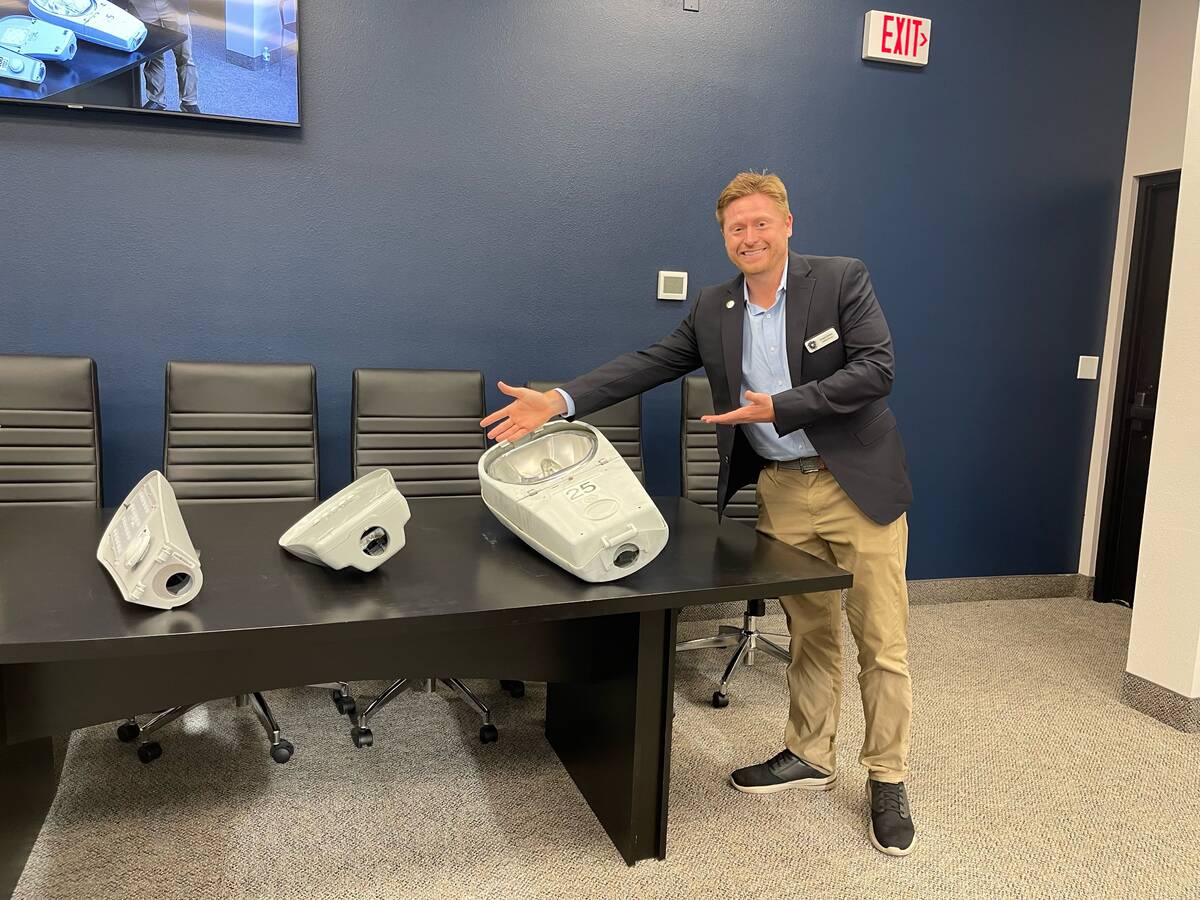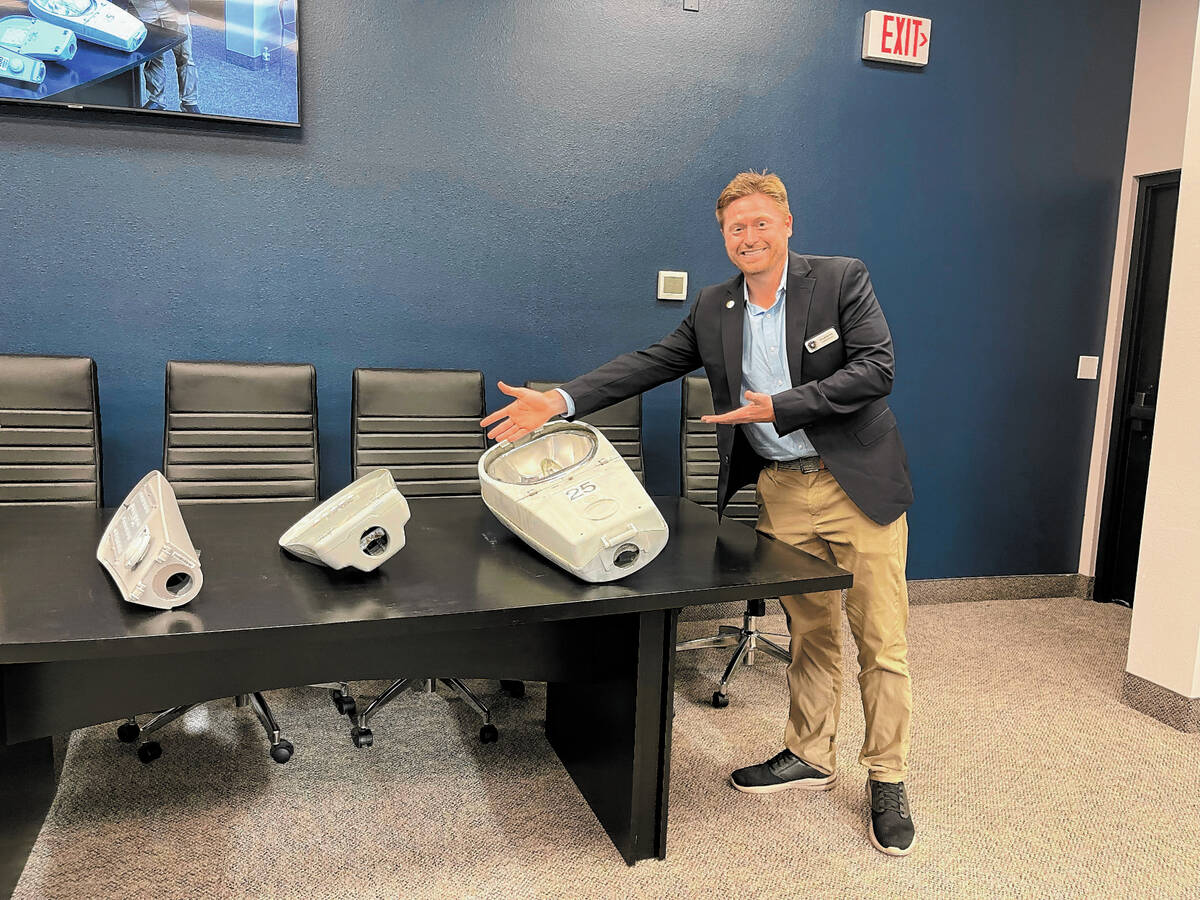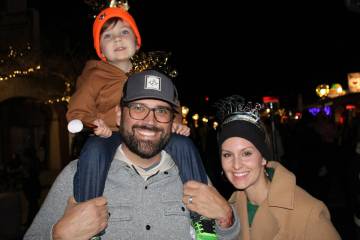Council meeting has show-and-tell for street lighting
Much has been made of the recent designation of Boulder City as an International Dark Sky Community.
Part of that designation meant an agreement made by the city council to accept nearly $2 million and match that up with more than $600,000 in city funds for the city’s Dark Sky Lighting Infrastructure Project, which will see the city replace some 84% of the current streetlight fixtures with new models designed to reduce light pollution.
At their meeting on Sept. 12, Public Utilities Director Joseph Stubitz had a show-and-tell session and came armed with examples of the kinds of lights used historically as well as more recent (but not light-limiting) LED models that use far less electricity as well as the newer LED versions that are currently being installed and that are designed to limit light to just the street below.
In addition to limiting light pollution, Stubitz has said that the new fixtures will increase nighttime safety for both drivers and pedestrians. The uniformity of nearly all of the lights in the city (outside of the historical downtown area) is expected to increase clarity for drivers and the downward focus of the light should make streets clearer for pedestrians walking at night.
“For this kind of show-and-tell, what we have here are three streetlights,” Stubitz said, beginning his presentation. Pointing to the largest fixture, Stubitz explained, “This is the historic high-pressure sodium light, the orange light that you would see. These are the older lights that we have been replacing. Four to five times the electricity usage for these than with the newer LED lights,” he said.
Moving down the line, he continued, “This is the light that we had been replacing the sodium lights with. The problem with this light is that while it uses less electricity and is a cooler, brighter light, the displacement of the light is up and out and into the areas where we don’t want it to be, like people’s yards and up into the dark night sky.”
Pointing to the third light in his presentation, Stubitz explained, “This third light, this is the lights we have installed from Adams and Buchanan all the way to Adams and Veterans. It is fully programmable, dimmable and it is a warmer, softer light. You’ll see if you drive down Adams that it is a uniform distribution. And they are programmable so we can set them to 50% and they will not encroach on people’s backyards.”
Bowing to the demands of state open meeting laws, which say that nothing not listed in advance on the agenda can be discussed, Mayor Joe Hardy said, “This being a public announcement, we won’t say anything else.”
Back in March of this year, when the council voted unanimously to accept the state funding and move forward with the project, Ashley Pipkin, who is with the Natural Sounds and Night Skies Division of the National Park Service, told the council that the new fixtures may help drive ecotourism to the city to see the night skies and that recognition from the International Dark Skies Association could help increase property values.
“I can walk out my door and I could see Orion’s Belt. That’s amazing for a town that’s relatively close to Las Vegas,” Pipkin said.
Contact reporter Bill Evans at wevans@bouldercityreview.com or at 702-586-9401.

















